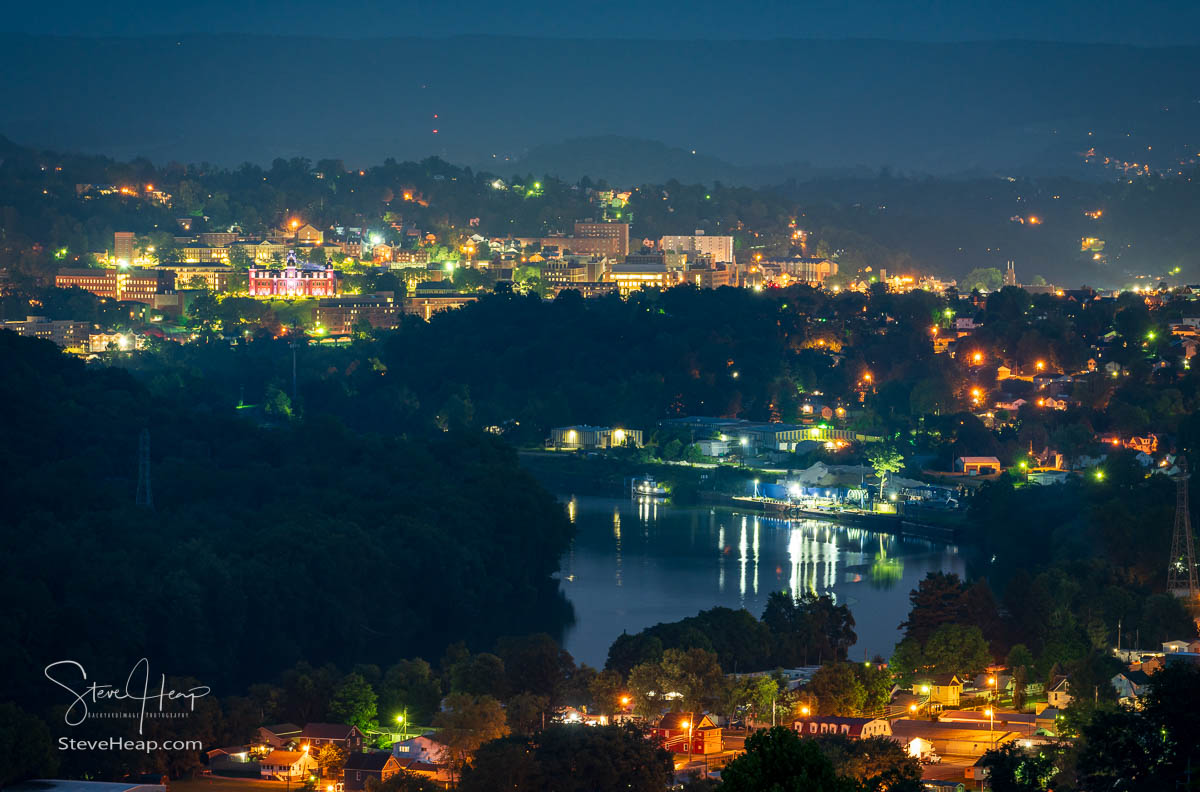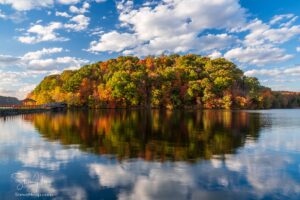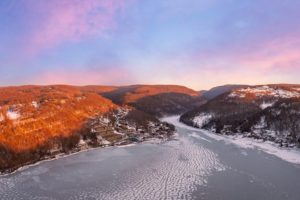The rise of the full moon is always an intriguing opportunity for photographers, especially when it is a little closer to the Earth than normal. The Sturgeon moon was due to rise on August 1st this year (2023) and so I decided to be in position to capture it rising over the city of Morgantown. I have photographed the moon rising from this same spot (behind Target in the University Town Center area of the city) before and got some lovely results. This one was from September 2022 and shows the moon rising behind the WVU Coliseum:
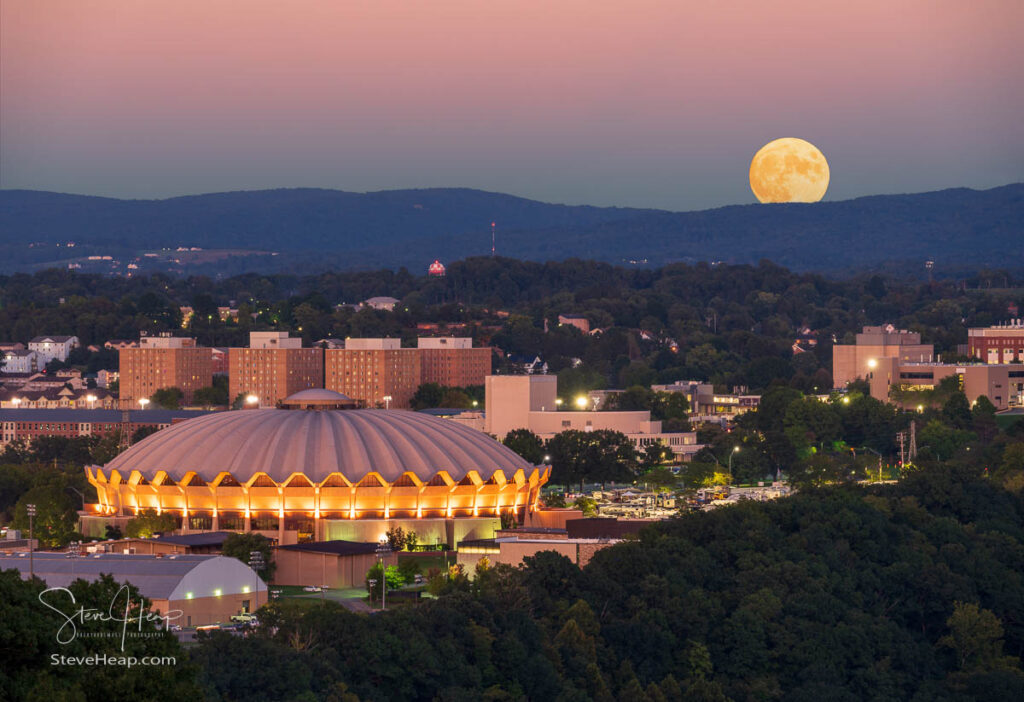
You can find prints of this gorgeous view of Morgantown in my Pictorem collection.
But the Sturgeon moon this August was going to rise later and in a slightly different direction – more over the city itself.
On the night, I was lined up (with a couple of friends from the local camera club) ready for the moonrise. We had our cameras on solid tripods as the sun set behind us and the lights started to twinkle in the town. With such dark conditions, you need exposures in the region of 8 seconds for the town itself and any movement would destroy the quality of the image.
We were anxiously watching the sky. The weather forecast was for decreasing clouds as the evening progressed, but our experience was not tracking with that forecast! In fact, a bank of clouds seemed to be sliding across the hills in front of us. Moonrise was going to be 9:04pm, but we needed to wait for it to rise sufficiently to be visible over the hills and so we tried various shots of both the town and the coliseum – the latter a little disappointing as building works meant that not all the lights were on around the perimeter of the building.
The town looked beautiful in this light though. There was a little mist in the air, but the sparking lights, especially around Woodburn Hall in the downtown campus of the University, looked particularly magical. This is what I managed to capture around 9:15pm that night:
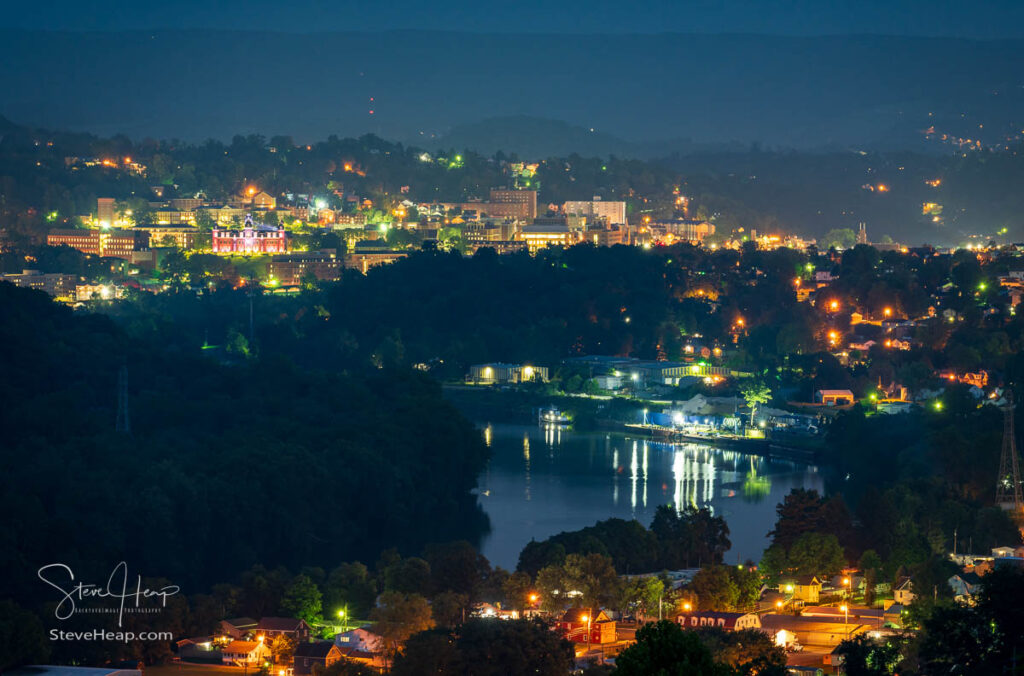
But where is the full moon? Unfortunately, even though we stayed for 30 minutes after the official moonrise time, it never appeared. When I arrived home shortly after 10pm, I did see it for about 5 minutes before it disappeared again, and it wasn’t very high in the sky. Did we leave too early or were the clouds too thick – we will never know!
Incidentally, why is it called the Sturgeon Moon? According to Chat-GPT, the AI system:
The Sturgeon Moon, also known as the Full Sturgeon Moon, is a term used to describe the full moon that typically occurs in the month of August. It is named after the sturgeon fish, a large and ancient fish species found in many freshwater lakes and rivers.
The names given to full moons, including the Sturgeon Moon, come from traditional Native American and colonial American folklore. These names were often inspired by the activities, natural occurrences, or cultural events that were common during the months when the full moons appeared.
The Sturgeon Moon received its name because August is historically the time of year when sturgeon fish were abundant and easily caught in certain bodies of water, particularly the Great Lakes and some East Coast rivers. The sturgeon was an important source of food for many Native American tribes and early settlers.
So now we know!
